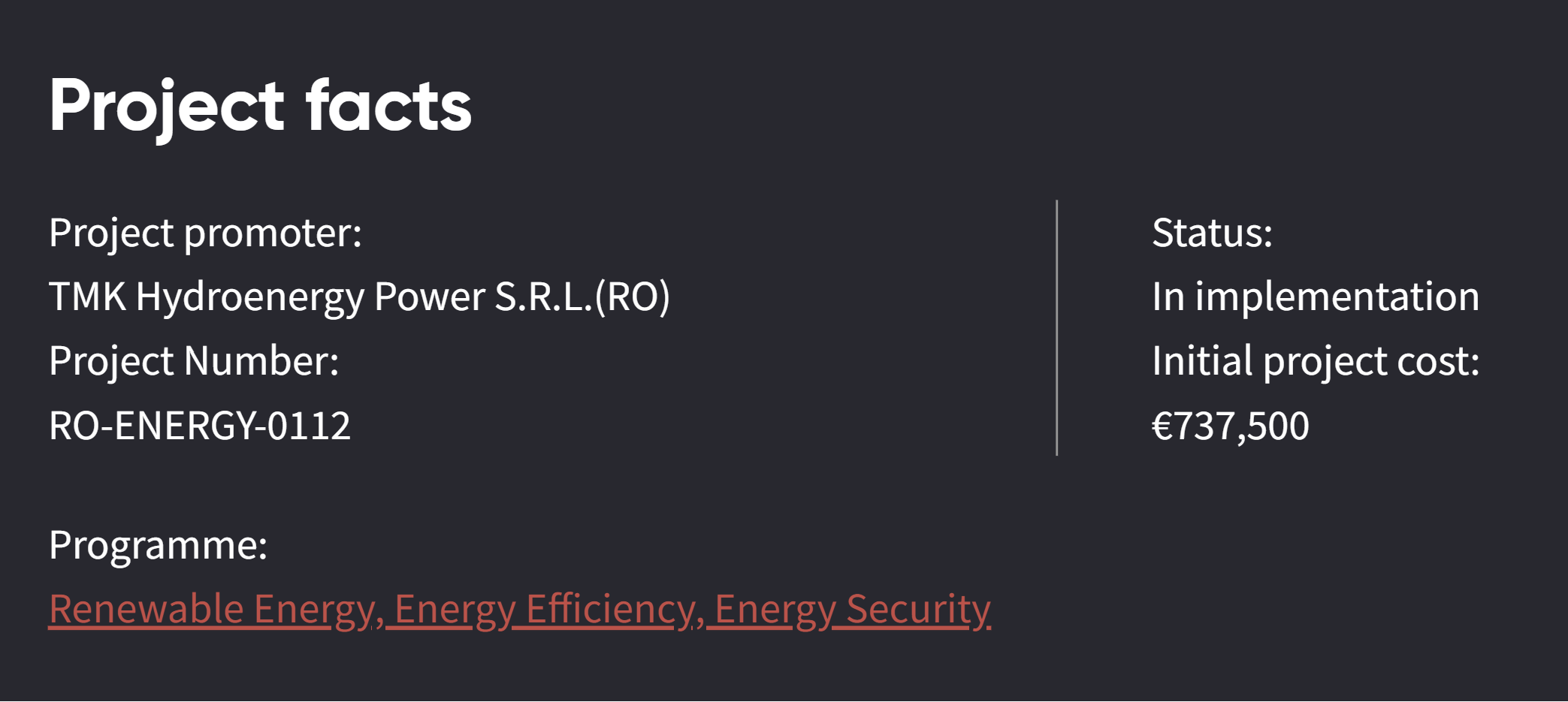The Romanian company TMK Hydroenergy Power, part of CEZ Group, is constructing a 1000 kW (1MW) floating photovoltaic power plant on Grebla Lake with funding from Norway Grants. The lake is located near Resita in the Caraș-Severin county, in Romania’s far west.
Photovoltaic technologies – more commonly known as solar panels – generate power using devices that absorb energy from sunlight and convert it into electrical energy through semiconducting materials.
The main objective of the project, implementation of the floating photovoltaic system, is to assure electricity from renewable resources for the company’s own consumption and to reduce its CO2 emissions.
The company conducted a feasibility study which found that the installation of a floating photovoltaic plant has obvious advantages, such as high energy production efficiency, production of renewable energy and the reduction of energy costs. Floating photovoltaic panels perform between 5% to 15% better due to the cooling effect of water. Due to water reflection, they are also less impacted by “shading” from other buildings, and they make use of inactive spaces such as this lake's surface.
The technical solution for the photovoltaic plant on Grebla Lake will be connected to the electricity grid. The solar power generated will partially meet the day-to-day energy needs of TMK company’s operations. The electricity produced will be transformed into low voltage by inverters. The solar panels will be located at approximately 5 meters from the banks. The entire portfolio of photovoltaic islands can be monitored by the Central Unit.
The investment targeted by this project has a positive impact on the company. Its implementation reduces energy consumption from conventional sources, energy cost economy and gives a partial energy autonomy.
“On the path towards a greener, more resilient tomorrow”
The project is part of the Energy Programme in Romania with Innovation Norway as Programme Operator. The Programme’s objective is less carbon intensive energy and increased security of supply.
Innovation Norway is also the Fund Operator for the floating solar power plant project on Lake Grebal.
“As the Fund Operator we are excited about the upcoming completion of one of the first floating photovoltaic systems in Romania. This innovative project not only advances Romania towards a sustainable energy future but also exemplifies advancements in renewable energy. As we draw closer to the final stages of this milestone, we are not just harnessing the power of the sun; we are shedding light on the path towards a greener, more resilient tomorrow,” says Programme Director
Magnar Ødelien at Innovation Norway.
The project aims to use the currently unused water body of Lake Grebla, with an area of 30,420 m², to partially cover the internal electricity consumption of TMK Hydroenergy Power.
The project also focuses on reducing greenhouse gas emissions as a primary target, with an estimated energy-related emission avoidance of over 332,622 t CO2 per year and a total of 4,989.33 t CO2 over 5 years.

Administrator with
the TMK Hydroenergy
Power company.
“The project represents an important step for the energy transition in Romania. Throughout the project, we counted on the support of the local authorities who supported us both in the authorization stage and in its implementation. Being a unique project in Romania, we set out to offer more than an example of good practices: a project that emphasizes the complementarity of different renewable resources. We will continue to invest in smart assets that support the energy transition. In the coming years, TMK’s team is also considering other ambitious projects, such as storing the energy produced”, says Liviu Gavrila, Administrator with the TMK Hydroenergy Power company.
Moreover, this project is in line with the objectives of the Romanian Government's 2050 Carbon Neutrality Roadmap, as it aims to maximise the use of clean energy in the system and exploit the capacity of existing grid connections.
The project is now in its final phase and construction of the plant should be completed by the end of this month.
Inspiring further green initiatives
It seems the Norway Grants floating solar power project has inspired further similar initiatives in Romania. Now the National Agency for Land Improvement of Romania is set to apply for European funds for a floating solar park on a network of irrigation canals east of Bucharest.
The government plans to complete the 20 MW project by the end of 2025, on four irrigation canals in the Gălățui-Călărași area, which were rehabilitated last year. The canal network has a good connection to the electricity grid, which would be used by the future so-called floatovoltaics.
Installing solar power panels over canals has numerous advantages. They reduce evaporation and the water below keeps the devices cooler, which boosts efficiency. Investors in such projects avoid ownership and licensing issues while staying off land that is used for food production. Floating solar power plants are even better in preventing evaporation and the water cools them down as opposed to photovoltaic arrays above water.

